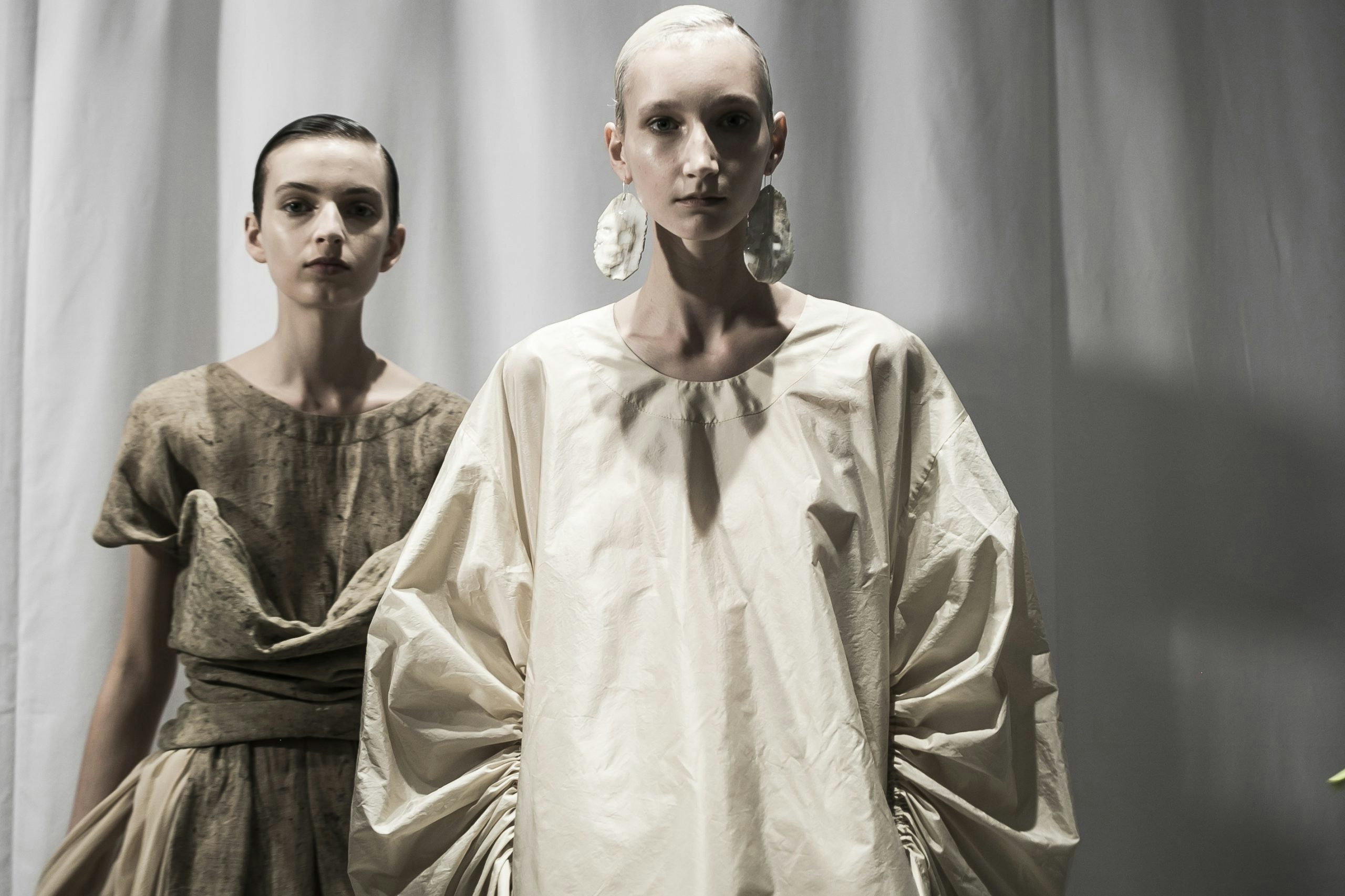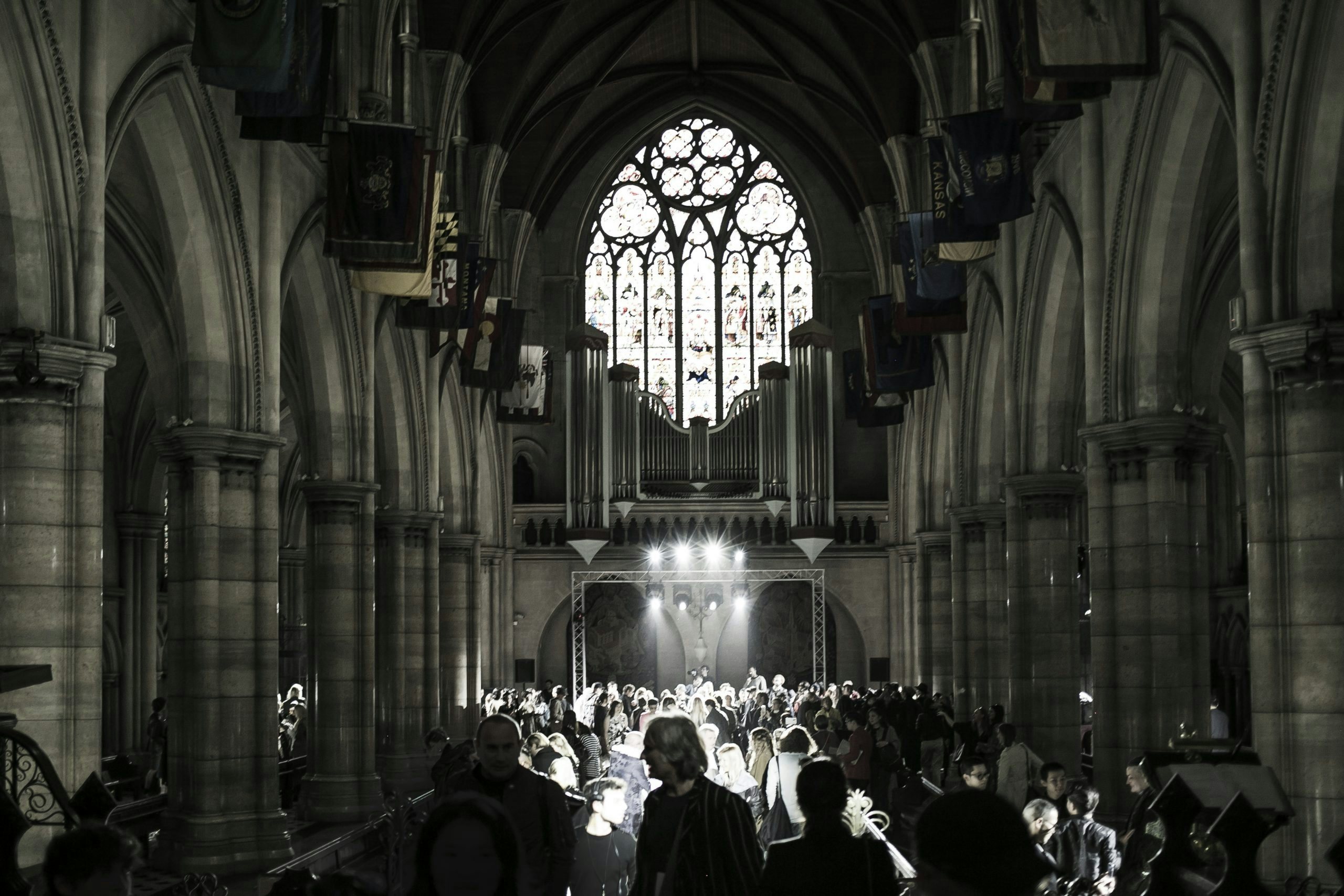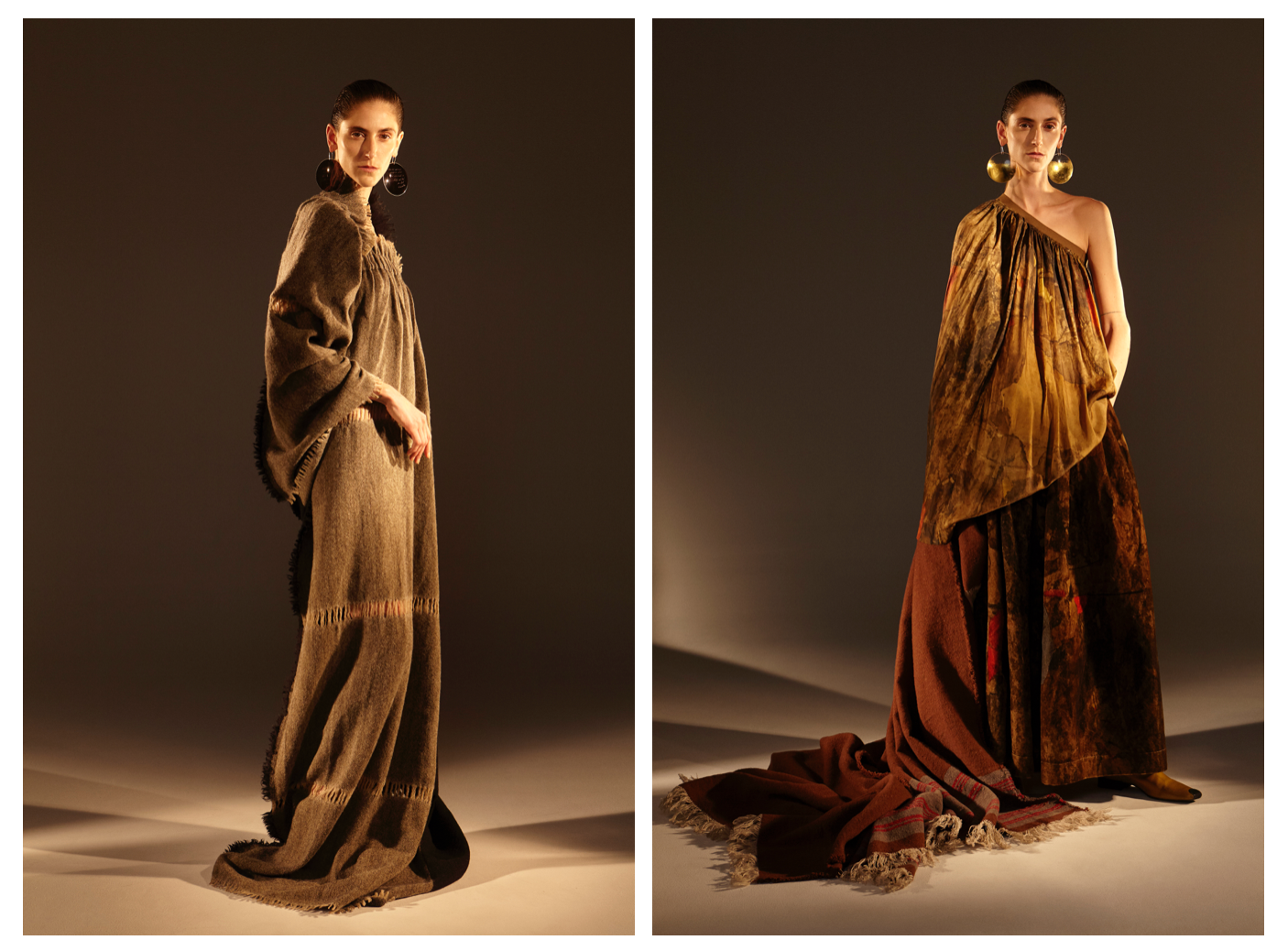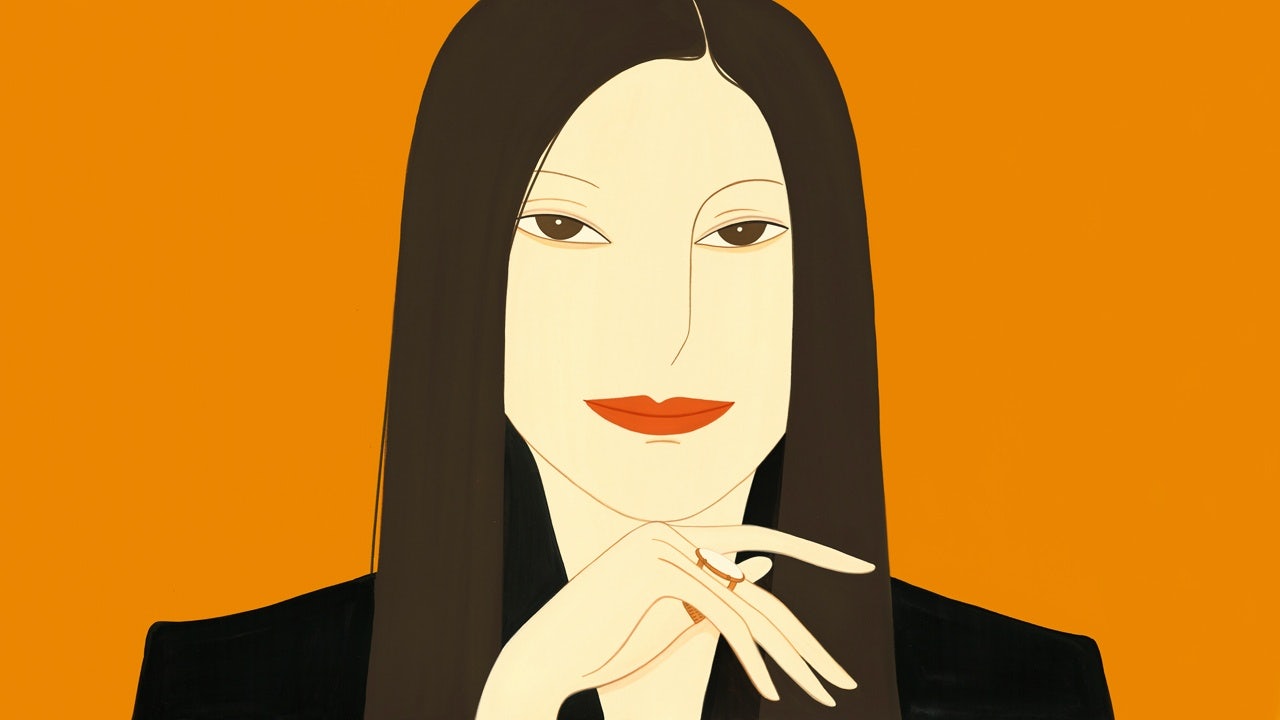As the first Asian face to hit the international fashion stage, Uma Wang has long explored oriental aesthetics. Recalling the dilemma she faced as a Chinese designer in 2005, she said, “Many Chinese designers have good work but haven’t established connections with foreign businesses. It’s difficult for foreigners to access their designs.” She had originally named her brand Uma Studio because she feared her Asian last name would limit her clientele. Three years later, she felt secure enough to rename her label, Uma Wang.
Having studied at China Textile University and Central Saint Martins, Wang was recommended by Vogue China to appear on the Vogue Talent stage in Italy in 2009. Her designs mix an innate sense of ancient and modern Chinese styles with chic, cosmopolitan looks, and an astounding range of fabrics serve as the primary vehicle for her creativity. She has gleaned inspiration from Jim Jarmusch’s vampire romance, “Only Lovers Left Alive” (2013), Frida Kahlo’s depictions of her fragile life, and Pompeii’s intricate and beautiful ruins. What’s remarkable is how Wang blends these Western influences with Asian aesthetics in such a restrained and subtle way.
In the past ten years, Uma Wang has collaborated with 15 boutique shops in China over the last ten years and operated in over 80 retail outlets around the world. Her pieces are priced from $700 to $3,000. Her client base ranges from 20 to 80 years of age and boasts throngs of loyal and successful entrepreneurs from the worlds of cinema, dance, and art.

She was just finishing up a 14-day quarantine in Shanghai when Jing Daily spoke with her about a range of topics, including her Pompeii-inspired Spring/Summer 2020 collection. "I didn’t expect that while [I was reminiscing] the instantaneous demise of a civilization, a similar fate would approach [ours]," she said solemnly. Despite a pandemic that has gutted the fashion industry and exposed a variety of structural issues, Wang stood firmly by the principles of her brand: using fabrics economically and making the most of each piece.
Wang, whose Chinese name is Wang Zhi, has fiercely protected her brand from the overcommercialization of fashion by focusing on these core tenets. With Zhi meaning “essence” in Chinese, it’s no coincidence that Wang has stuck so closely to her core message despite the dizzying changes that have hit the fashion landscape.
What were you doing when the COVID-19 outbreak exploded?#
When COVID-19 was the severest in China, I was in Shanghai, working on a sample for Paris Fashion Week. Fortunately, the virus wasn’t widely spread in Europe yet, so the Italian factory I worked with managed to produce the new sample. The show was canceled, but we kept the showroom for guests to place orders. The factory and my team cooperated seamlessly, so we had completed 150 pieces before February 23. Immediately after arriving in Paris, I contacted models and photographers and finished shooting 15 looks in the studio. Three days later, the showroom was officially opened to the public.
We put aside our original theme because of the pandemic. I want the brand to have good sales at such a difficult time to benefit everyone on the team, so we focused more on the market this time and made some pragmatic pieces, renewing the classics with different fabrics.
How has the pandemic affected your life, work, and personal beliefs?#
My strongest feeling was frustration, and I questioned my life choice to be a fashion designer instead of a doctor [Wang was born in a family of doctors]. I felt powerless in the face of the pandemic. I often remind myself to avoid being overburdened by material objects, and I try to engage with only the best materials and make the best use of things.
I just finished my last season, which had a Pompeii theme. At the end of a public speech I gave last year, I wished everyone an enjoyable present, a fearless future, and to always have dreams. I had no clue that as we reminisced about the instantaneous destruction of a civilization, a catastrophic pandemic was slowly approaching.

You are good at expressing profound concepts in the form of clothing. What’s the secret to this?#
I didn’t deliberately look for themes — most of my work reflects true emotions and feelings I’ve experienced. For example, I didn’t plan the Pompeii series on purpose. I visited the ruins during a vacation without expecting to feel the power of this experience. When I saw a big family’s ruined wall in Pompeii, it looked surprisingly similar to oriental architecture. The color of the wall, weathered by time, looked similar to walls from the Tang Dynasty.
I am particularly grateful for my teams in Italy and China. These are the people who turned my messy ideas into real things. For example, the fabric factory offered me professional advice on what material has the most similar texture to a mottled wall. We also invited a Belgian to make our showroom music — a ticking countdown sound that created an apocalyptic effect — and worked with a jewelry designer in Japan. I showed him pictures of my design and described the concept, and when I saw his final product in Osaka a month later, I got goosebumps.
How do you convey your oriental philosophy to the West?#
I started by selling my designs at foreign boutique stores and slowly made it to Fashion Week. I was incredibly lucky along the way. I am a Chinese and wanted to express my own traditional aesthetics — it’s neither oriental nor Western by nature but resembles a harmony between East and West. The world is getting smaller, and I’m more confident about the innate beauty in this kind of aesthetic. I think it’s a common misconception that China only has factories and not designers. Over the years, this has changed a lot. Now, few judge any designer based on his or her origins. Everyone gets an equal opportunity to enter the fashion week agenda.
How do you feel Chinese designers have grown over the years?#
Today, young designers are coming back to China after studying or working abroad, and it’s making China a more dynamic place than ever. We are all pursuing careers we enjoy, and I’ve been pleasantly surprised by how young designers are capable of establishing strong personal styles early on. Finding a distinct, personal voice was difficult for me at first, and access to information was much more limited 10 years ago. But now, young designers have received good educations and can form their own interpretations of fashion.
What are you working on now?#
The Pompeii series performed quite well, and many stores were out of stock. The Italian factory is currently closed for orders, so the small sample room in China is working on replenishing. I should be working on menswear at this time, but I’m not sure whether the menswear fashion week in June is still going to happen. At the request of our guests, we are currently developing a lifestyle line. We choose to collaborate with a Danish furniture brand on a capsule series, which will be published online. In the long run, I’m not planning to sell the brand or sell shares. I want to maintain its current scale; it is intimate and beautiful. If outsiders come into the company, it makes the decision-making process harder. But I might run into a great partner in the future — who knows?

What works of art or design have inspired your collections recently?#
My current favorite is an Italian artist called Maria Lai. She is good at establishing rhythm and relationships with a galaxy of materials, connecting fabric and thread with other textures. I believe many people will be attracted to the sense of security in her works.
The original interview in mandarin was conducted by Ruonan Zheng, and translated into English by Haiqing Zhang.
